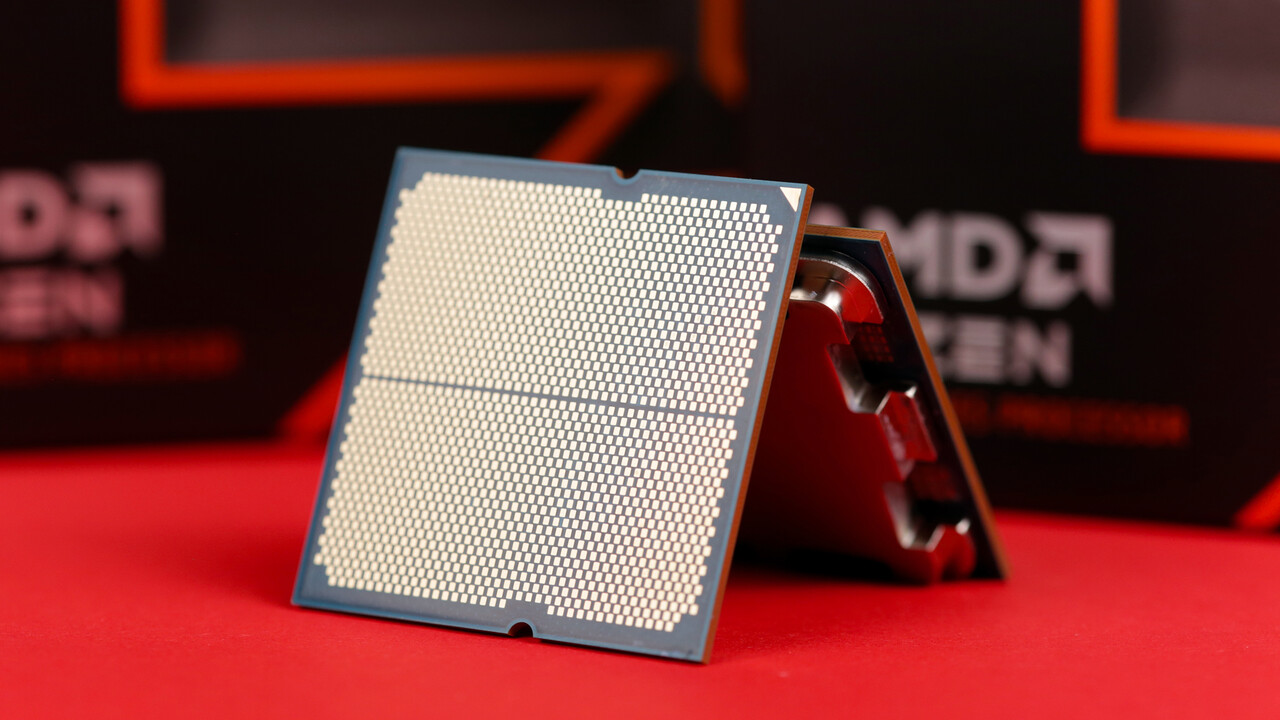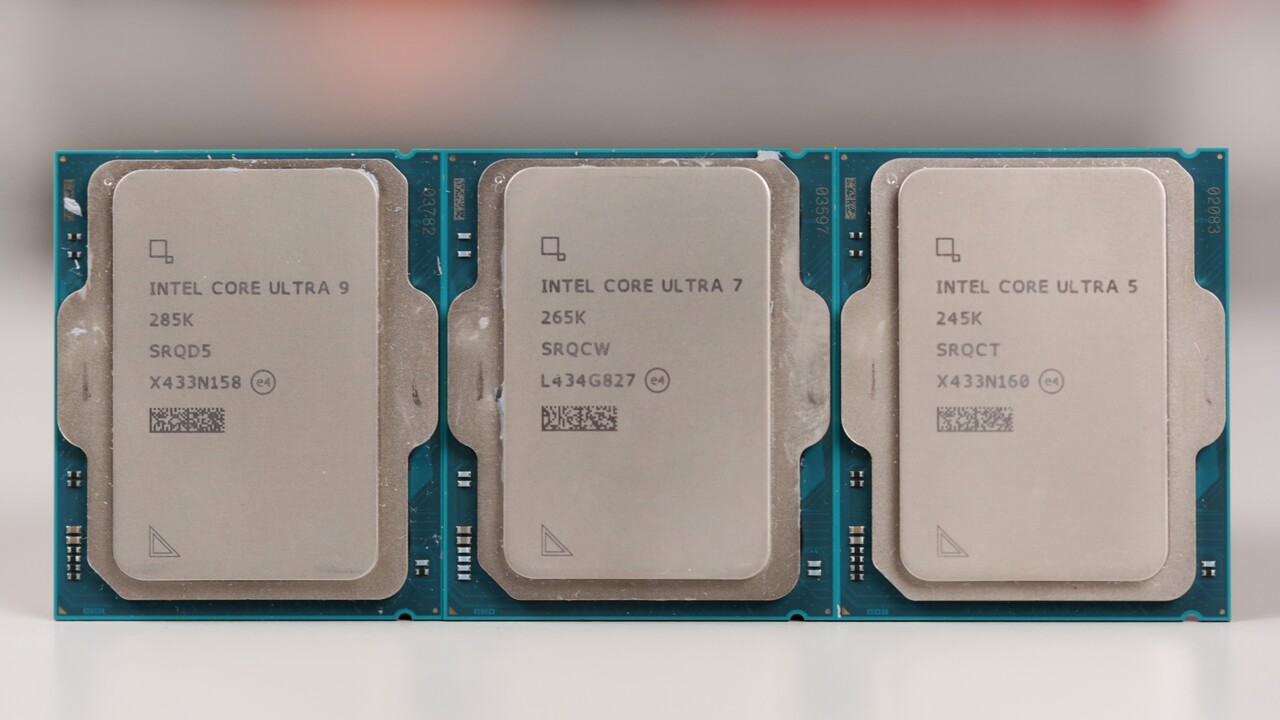9800x3d vs 14900k with RAM-OC in the test: Which processor is the best gaming choice for the RTX 5090? 86 comments
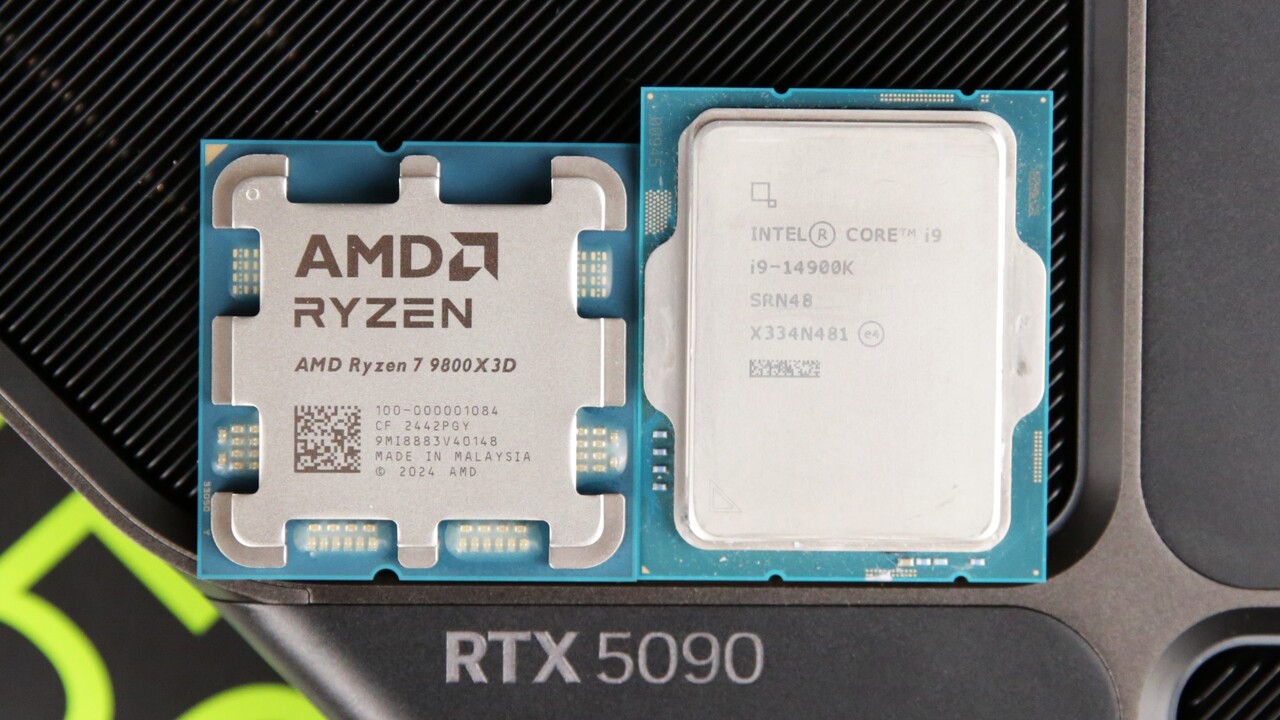
Intel Core i9-14900K or AMD Ryzen 7 9800x3d with overclocked RAM? Which CPU is the best base for the GeForce RTX 5090? Computer reader “Esenel”, known for his expertise towards RAM-Overclocking in the community, investigated this issue on his own interest and presented his test results and conclusion.
Table of Contents 1 Which CPU is the best gaming choice for RTX 5090? Intel or AMD? Which CPU for the GeForce RTX 5090? The choice of working storage 2 benchmarks The two test systems and its parameters Benchmarks: Overview and analysis of electricity consumption Conclusion
The author of this article is not a member of the editorial, but registered under the user name ESENEL in the Techconseil-Forum and is known for his expertise in the field “RAM-OC”. In community benchmark tests, it usually occupies the first places – thanks to the fast processor and GPU, but also due to the RAM settings pushed to the optimum. The processors are the property of the author. Only the RAM was made available by the respective companies on loan by the editorial team.
Intel or AMD? Which CPU for the GeForce RTX 5090?
In search of the answer to the question, which can of course be decided between Intel Core i9-14900K (test) and AMD Ryzen 7 9800x3d (test), the journey to the AMD warehouse began as an Intel user from long time after purchase after purchase The X3D CPU with a shutdown in the CM87 computer player Discord community. At first it was necessary to purchase a solid Ram OC mainboard for Speerspitze from AMD, the Ryzen 7 9800x3d.
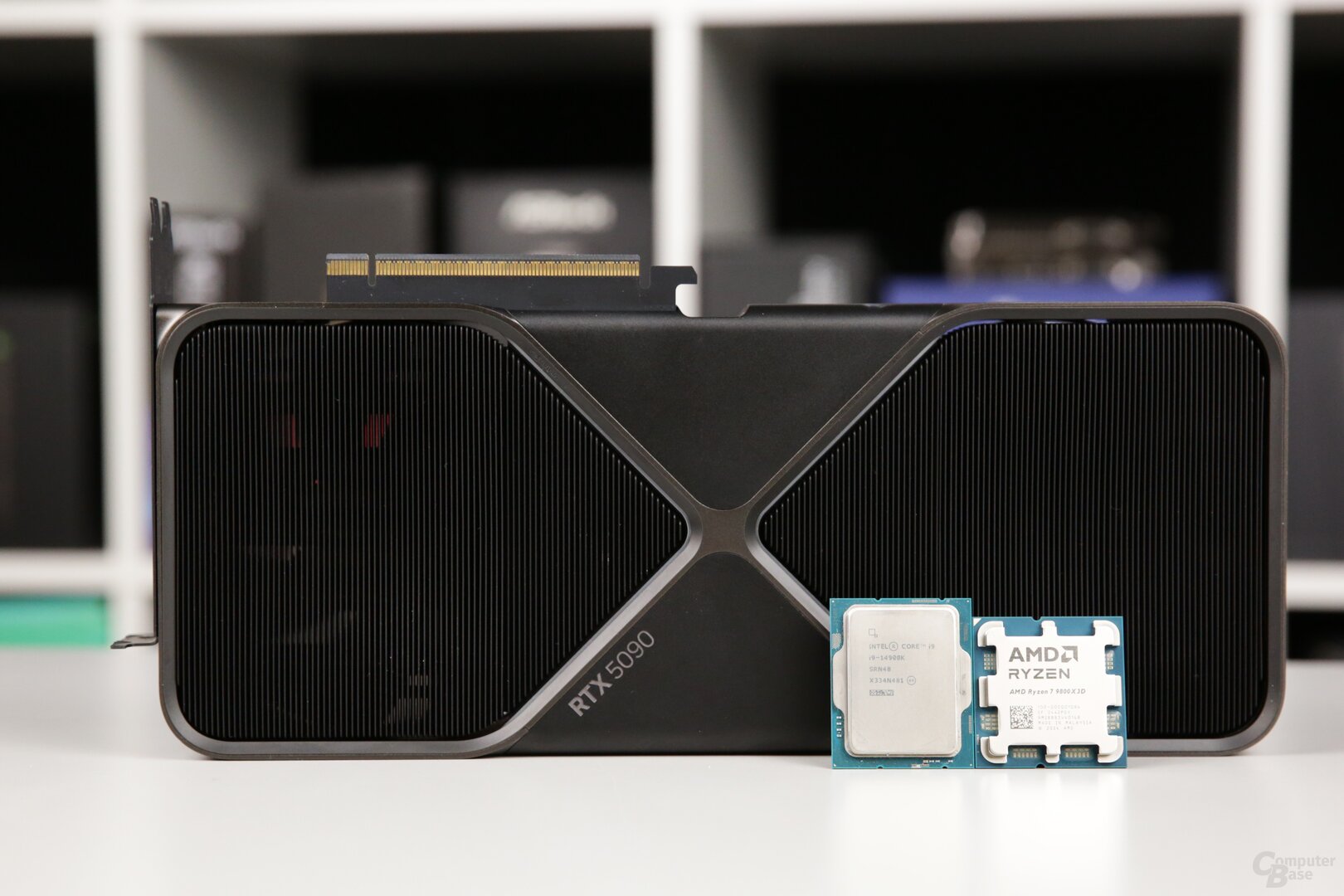 The best processor for GeForce RTX 5090: AMD Ryzen 7 9800x3d vs. Intel Core i9-14900K
The best processor for GeForce RTX 5090: AMD Ryzen 7 9800x3d vs. Intel Core i9-14900K
AMD Ryzen 7 9800x3d on ASUS ROG B650E-E GAMING WiFi
This community is always worth a visit if you want to learn more about a basic AMD and need some getting started help when overclocking RAM. Community-driven is provided as a starting point for fine-tuning and aided by guidance and action.
After exchanging an Asus Rog Strix B650E-E Gaming WiFi, I decided on the one hand, it covers all my questions in the direction of connections and overclocking and on the other hand, it is attractive (from of 269 euros).
Intel Core i9-14900k with asus rog maximus z790 apex always
Intel’s Core I9-14900K, better known as “The Crowbar”, is the opponent with around 2,700 operating hours. This processor has been sitting on an ASUS ROG Maximus Z790 Apex Encore (from 552 euros) since its installation; A two-dimm-slot-RAM-OC main board, which in my opinion is also necessary in order to unlock performance with the RAM upgrade on an Intel Core i9.
The choice of working storage
Basically, it is worth remembering again that ZEN-5 processors (AMD Ryzen 9000) are limited primarily via FCLK and, depending on the selected equipment mode, there is an optimal ratio of TAKTE FCLK: UCLK: MCLK.
FCLK: Infinity-Takt Fabric Clock from the pack
So to determine the best setting for the Ryzen 7 9800x3d, I used two different RAM kits.
A kit for G1 mode
The first kit can still be known in the RAM OC test of the DDR5-6400 DDRA RGB kit DDR5-6400 from Teamgroup T-Force Delta RGB with GDR5 memory from the H16M storage (2 × 16 GB) as a GDR5 memory from the first storage generation speed of up to 6800 MT/s and should show whether this state-of-the-art processor can also be used with older RAM
It is ideal for a so-called Gear-1 (G1) setting. With G1, the goal of UCLK and MCLK in the 1:1 ratio and FCLK to UCLK:MCLK in the 2:3 ratio should be used in order to be able to achieve the lowest latency across the entire chain.
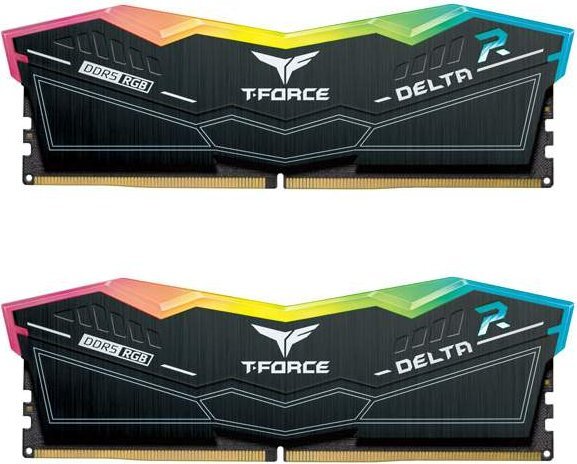 TeamGroup T Kit Delta RGB DDR5-6400 (BILD: TeamGroup)
TeamGroup T Kit Delta RGB DDR5-6400 (BILD: TeamGroup)
An ideal combination for FCLK:UCLK:MCLK in G1 would be 2200:3300:3300. One configuration, which must be achieved, is 2133:3200:3200 and therefore a RAM speed of 6400 mt/s.
A kit for G2 mode
The second kit is located at the other end of the spectrum. The G.Skill Trident Z5 CK DDR5 Cu-DIMM 8200 kit comes with H24M ICS and a driver supposedly to be able to achieve even higher transfer rates.
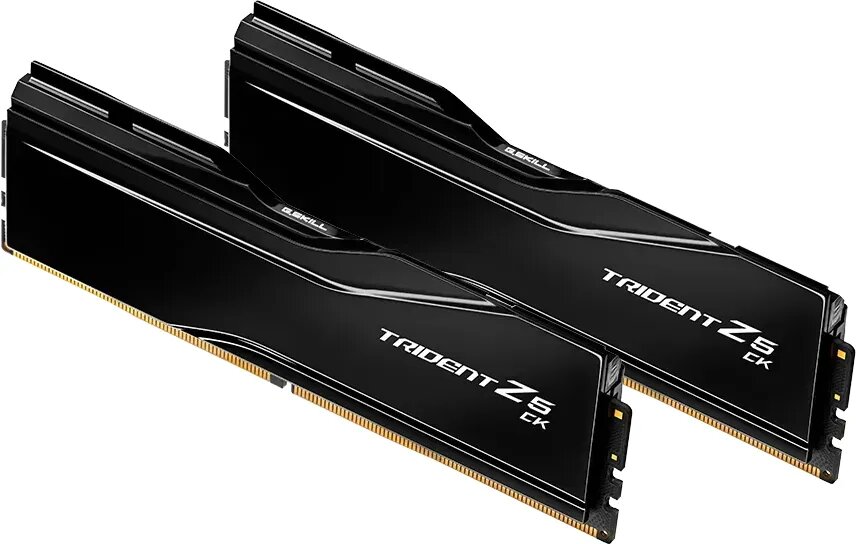 3346029-L3G.Skill Trident Z5 CK DDR5 CU-DIMM 8200 (Bild: G.Skill)
3346029-L3G.Skill Trident Z5 CK DDR5 CU-DIMM 8200 (Bild: G.Skill)
As the following image shows, this technology on an AMD-Sryzen system cannot currently be used: Cudimm modules (details) run in the so-called bypass mode, the clock chip on the modules is avoided.
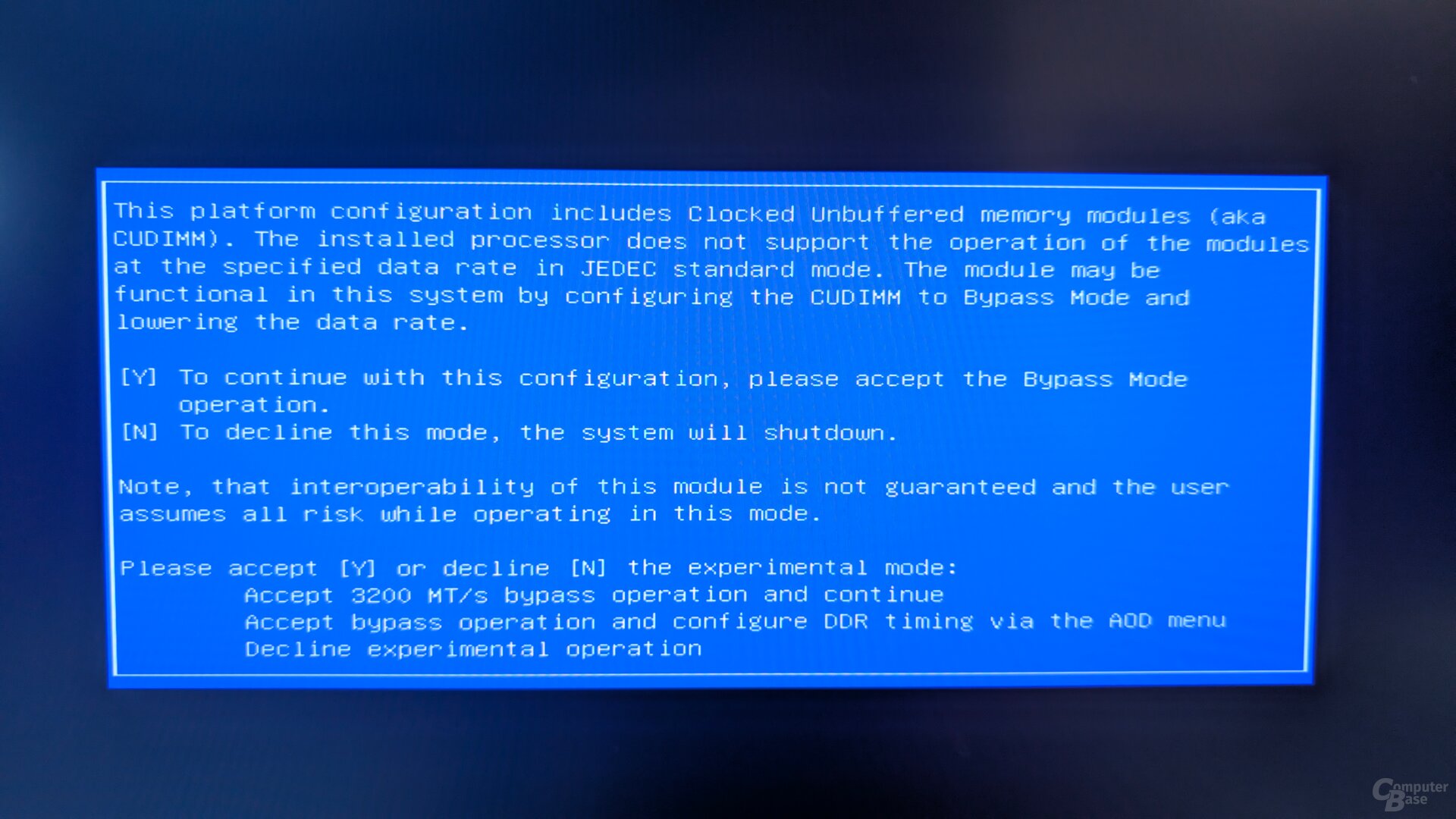 CK Cudimm AMD BootvorGang
CK Cudimm AMD BootvorGang
Nevertheless, this kit is very suitable for Gear-2 (G2) mode, in which synchronous operation of FCLK and UCLK is the goal and MCLK is in a 2:1 ratio to FCLK:UCLK.
An ideal G2 combination for FCLK:UCLK:MCLK would be at 2200:2200:4400. A realistic combination is 2000:2000:4000, which will be my starting point for Gear 2, but has always been added by an increase in FCLK of 2200 in order in order To be able to allow a little more throughput with less latency. This combination reflects a RAM speed of 8000 mt/s.
Computer base member Reous, known for his DDR5 TRFC listing (Google Docs), wonderfully shows that GDR5-ICS (memory chips) are well suited to low latencies and adjacent timings. Hynix in particular stands out with its 16 Gbit A-Die-ICS. With these, you could get a little more of the following settings on the AMD Ryzen 7 9800x3d.
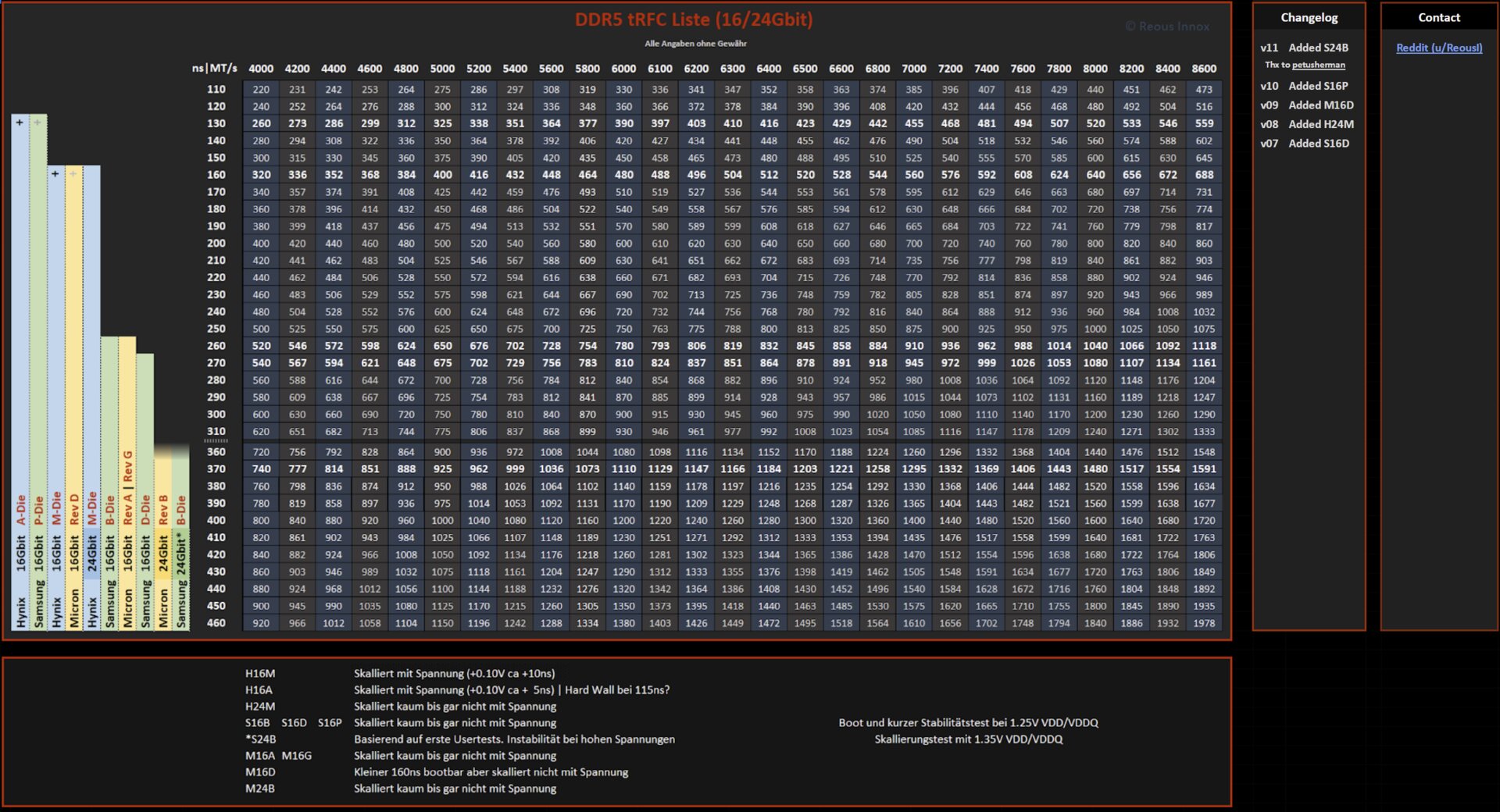 DDR5-TRFC listing (BILD: Reddit U/Reousl)
DDR5-TRFC listing (BILD: Reddit U/Reousl)
All parameters checked for stability
The final for later gaming benchmarks used had to face RAM stability testing for several hours before the results were determined. It should be noted that the Intel Core i9-14900K could still boot the RAM to 8000 MHz, but it was no longer possible to make it work stable. The CPU proved to be very difficult in the Agent System (SA) stress. With the 9800x3D a boat was no longer possible at 6600 MT/s and also at 8200 MT/s. This works in both the RAM speed and the important FCLK at the respective maximum.
Page 1/2 Next page
Reference Topics: RAM Processor Image Overview

Marc deciphers processors by testing their performance for gaming, content creation, and artificial intelligence.
